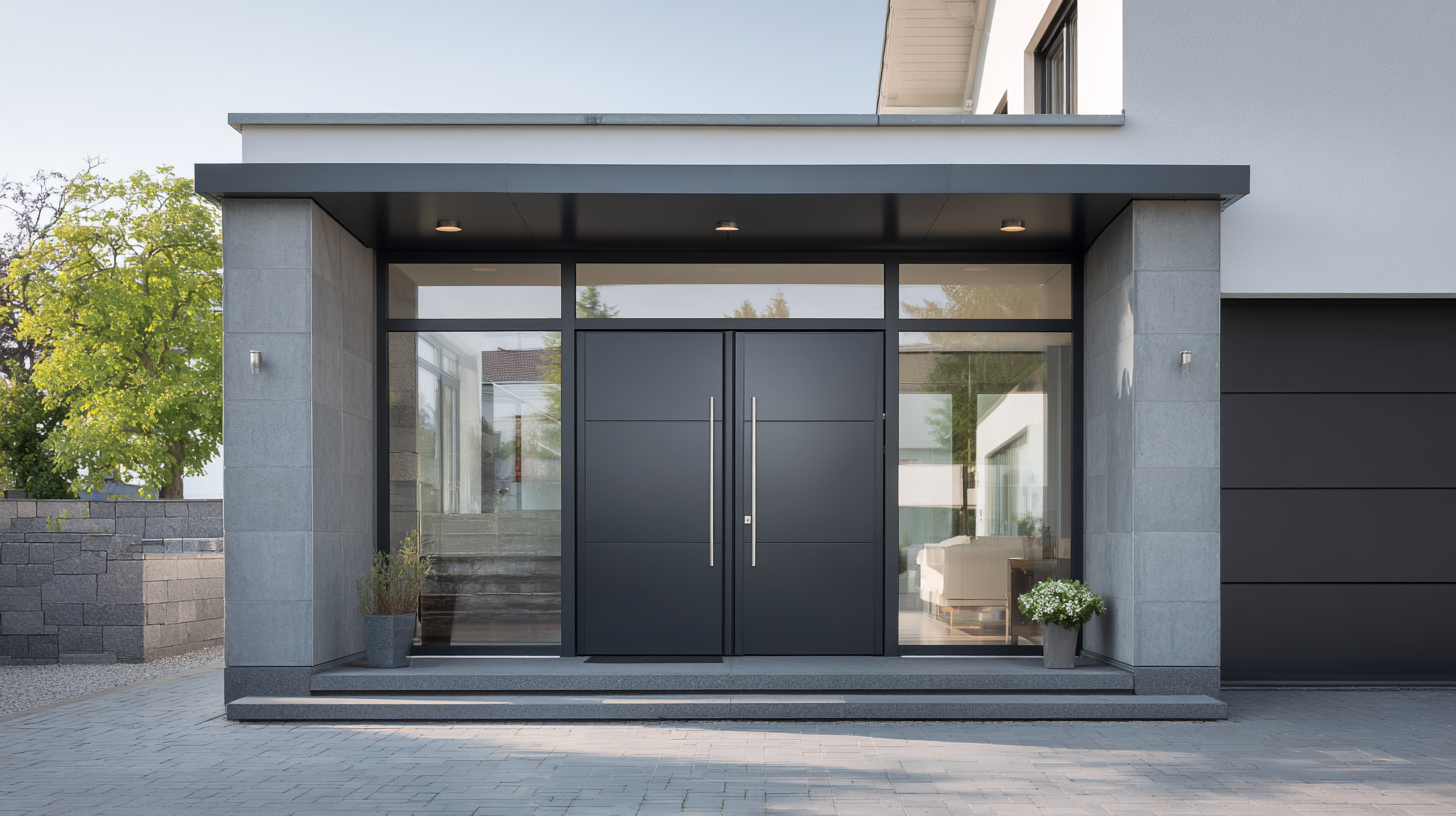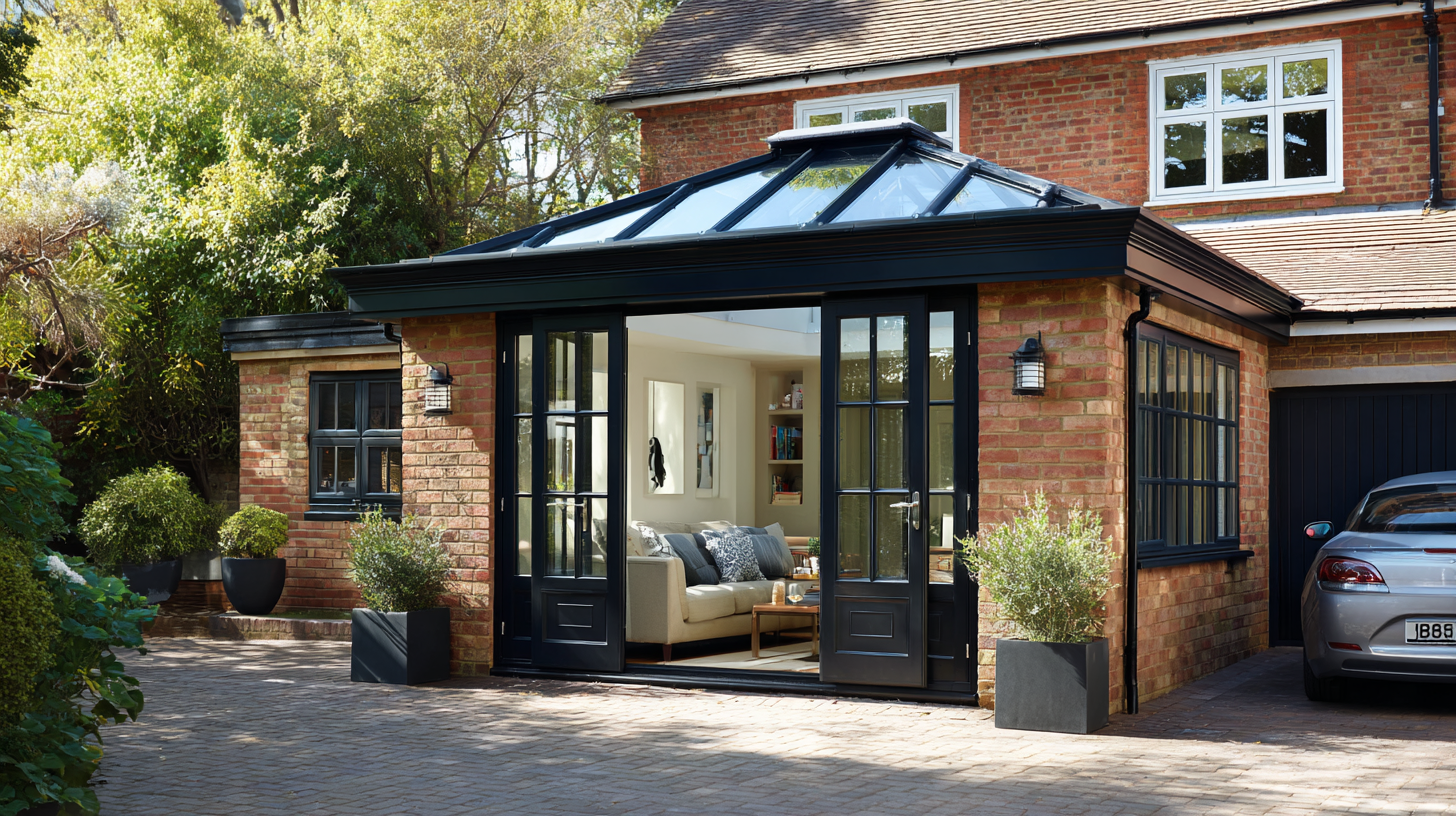The demand for aluminium front doors is witnessing a significant upswing, driven by the growing emphasis on energy efficiency, durability, and aesthetic appeal in residential and commercial settings. According to a recent market report by Grand View Research, the global aluminium door market is projected to reach USD 78.21 billion by 2025, with a compound annual growth rate (CAGR) of 4.5% from 2019 to 2025. This trend is further supported by consumer preferences leaning towards low-maintenance and long-lasting materials which enhance property value. With advancements in technology and increased awareness of sustainable practices, the market for aluminium front doors is expected to evolve, offering innovative designs and features that cater to the modern consumer's needs. This blog will explore the future market trends for aluminium front doors by 2025, backed by compelling case studies that illustrate the potential transformations in this thriving sector.

The demand for aluminium front doors is projected to rise significantly by 2025, driven by several market dynamics. According to a report by Allied Market Research, the global aluminium door market is expected to grow at a CAGR of 6.3%, reaching approximately USD 112 billion by 2027. This growth is primarily fueled by the increasing preference for energy-efficient and aesthetically pleasing architectural solutions among homeowners and builders alike.
Moreover, the rise in urbanization and construction activities worldwide is anticipated to contribute to the surge in demand for aluminium front doors. With urban populations expected to grow by 1.5 billion by 2030, as reported by the United Nations, the need for durable, low-maintenance building materials is becoming ever more crucial. Additionally, factors such as stringent building codes and an emphasis on sustainability are encouraging builders to adopt aluminium doors, which are not only recyclable but also offer high thermal efficiency. Case studies from leading manufacturers indicate that projects utilizing aluminium front doors have observed a significant reduction in energy consumption, making a compelling case for the material's adoption in both residential and commercial construction.

The aluminium front door market is witnessing revolutionary innovations that not only enhance aesthetic appeal but also improve functionality. Case studies from leading manufacturers reveal a trend towards energy-efficient designs that incorporate advanced insulation technology. For instance, one successful case study demonstrated a family-owned business that shifted to triple-glazed panels, resulting in significant energy savings and increased customer satisfaction. Such innovative applications highlight how aluminium doors are not just entryways but pivotal components in energy-conscious building designs.
When considering an aluminium door, it's essential to evaluate its thermal efficiency. **Tip:** Look for doors with a high R-value, indicating superior insulation, which can reduce heating and cooling costs over time. Additionally, durability plays a crucial role; modern aluminium doors are designed to resist weathering and corrosion, ensuring long-term performance. **Tip:** Opt for powder-coated finishes that provide both aesthetic diversity and added protection against the elements. By focusing on these innovations and learning from successful case studies, homeowners can make informed decisions that align with future market trends in aluminium front doors.
In the ever-evolving aluminium sector, understanding export and import certification requirements is critical for businesses aiming to thrive in international markets. Compliance with regulatory standards ensures that aluminium front doors not only meet safety and quality specifications but also gain the trust of consumers. To navigate this complex landscape, companies must stay updated on both local and international certification bodies, which can vary significantly across regions. Strategically engaging with consultants who specialize in certifications can streamline this process, reducing delays and potential fines.
Moreover, leveraging technology plays a crucial role in simplifying the compliance process. Digital platforms that track certification status, facilitate documentation, and automate regulatory updates allow companies to maintain a competitive edge. Case studies reveal that firms embracing tech solutions have significantly reduced their time to market while ensuring adherence to all necessary certifications. As we approach 2025, businesses that prioritize understanding and implementing these certification requirements will not only enhance their operational efficiency but also foster stronger relationships with global partners, ultimately positioning themselves as leaders in the aluminium front door market.
| Market Trend | Projected Growth Rate (%) | Key Drivers | Case Study Example | Certification Requirement |
|---|---|---|---|---|
| Increased Demand for Energy Efficiency | 8% | Government incentives, rising energy costs | A residential project using thermally broken aluminium | CE Marking (European Union) |
| Growing Trend towards Customization | 10% | Consumer preferences, technological advancements | A luxury home renovation featuring bespoke designs | ISO 9001 Certification |
| Increased Use of Smart Technology | 12% | Rise in home automation, security concerns | A smart home equipped with sensor-based aluminium doors | UL Certification (Safety Standard) |
| Sustainability and Eco-friendly Materials | 9% | Consumer awareness, regulatory pressure | A project focusing on recycled aluminium doors | LEED Certification |
Sustainability has emerged as a driving force in the design and marketing of aluminium front doors, influencing both consumer choices and manufacturers' approaches. As global awareness of environmental issues grows, homeowners are increasingly seeking out products that reflect their values, favoring doors made from recycled aluminum and sourced through sustainable methods. This shift not only enhances the appeal of aluminium doors but also promotes branding that resonates with eco-conscious consumers.
Innovative design trends are also aligned with sustainability, incorporating features like energy-efficient insulation and low-impact finishes. Companies are leveraging advanced technology to improve the lifecycle of aluminium doors, ensuring they are durable and require minimal maintenance. Case studies from leading manufacturers showcase how integrating these sustainable practices can elevate market appeal and cater to a demographic that prioritizes eco-friendly solutions. As we look to 2025, the blend of sustainability and cutting-edge design will likely define the aluminium front door market, attracting a new wave of environmentally responsible consumers.
This bar chart illustrates the projected market demand for aluminium front doors from 2019 to 2025. As sustainability trends gain momentum, the demand is expected to rise significantly, reflecting consumers' growing preference for eco-friendly building materials.
As we look toward 2025, the aluminium front door industry stands at the intersection of innovation and regulatory evolution. The anticipated regulatory changes are poised to reshape the market significantly, with sustainability becoming a central tenet of building standards. Governments are increasingly emphasizing energy efficiency and recyclability, compelling manufacturers to adapt their offerings. These shifts not only influence design choices but also elevate the importance of compliance, setting the stage for a competitive advantage for those who effectively align with new regulations.
Moreover, the overall market outlook for 2025, with projections indicating a substantial growth trajectory, adds another layer of opportunity for the aluminium front door sector. With the doors market expected to reach USD 118.2 billion, stakeholders must stay informed about the evolving landscape. Companies that integrate insights from construction forecasts—and align their product strategies with regulatory guidelines—will be well-positioned to thrive in this dynamic environment. The dawn of 2025 promises a framework where regulatory foresight and market agility work hand in hand, reshaping the future of aluminium front doors.
